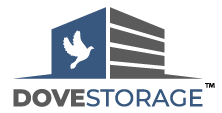Factors That Influence Self-Storage Prices (Location, Unit Size, Time of Year)
Dove Storage
March 18th, 2025

Self-storage units provide a convenient and flexible solution for people needing extra space. However, storage costs can vary significantly depending on several factors. If you’re planning to rent a self-storage unit, understanding the elements that affect pricing can help you make informed decisions and find the best deal.Here’s a breakdown of the three main factors that influence self-storage prices: location, unit size, and time of year—plus some tips to maximize value.
1. Location: How Geography Impacts Storage Costs
One of the biggest factors affecting the cost of a storage unit is its location. Depending on where you live, prices can differ significantly based on demand, real estate costs, and local competition.
Urban vs. Rural Areas
Urban Areas: In large cities or densely populated areas, self-storage prices tend to be higher due to increased demand and higher property costs. For example, a unit in a major city like New York or Los Angeles will typically cost more than one in a rural town.
Rural Areas: In contrast, areas with lower population density often have cheaper storage rates. However, fewer options and fewer advanced facilities may be available.
Regional Differences
High-Cost Regions: Areas with booming economies or limited space—such as the West Coast or Northeast U.S.—often experience higher storage costs.
Low-Cost Regions: Areas with lower living costs or less development generally offer more affordable storage.
Pro Tip: If you’re looking to save money, consider driving a little further to a less central location where rates may be lower.
2. Unit Size: Bigger Units, Bigger Price Tags
The size of the storage unit you choose directly impacts how much you’ll pay. Storage facilities typically offer various sizes to meet different needs, ranging from small lockers to large garage-sized units.
Common Storage Unit Sizes and Their Uses
5’x5’ (25 sq. ft.): Ideal for storing seasonal items, personal documents, or a few boxes.
10’x10’ (100 sq. ft.): Suitable for the contents of a 1-bedroom apartment, including furniture and appliances.
10’x20’ (200 sq. ft.): Perfect for storing the contents of a 3-bedroom home or business inventory.
How Size Affects Cost
Smaller Units: More affordable but may not accommodate larger belongings.
Larger Units: Cost more but provide the space needed for bulky or numerous items.
Pro Tip: If you’re unsure about the size you need, consult with the storage facility. Many offer size guides to help you choose the most cost-effective option.
3. Time of Year: Seasonal Pricing Trends
Storage unit prices can fluctuate throughout the year based on seasonal demand. Certain times of year see increased competition for units, leading to higher rates.
Peak Season (Spring and Summer)
Why Prices Rise: From May to September, people are more likely to move, downsize, or store items for college students—increasing demand.
Common Uses: Moving, renovating, and seasonal storage drive prices up.
Off-Peak Season (Fall and Winter)
Why Prices Drop: Demand decreases during the colder months, leading many facilities to lower rates or offer promotions to attract customers.
Common Uses: People typically store holiday decorations or seasonal equipment during this time.
Pro Tip: If possible, plan your storage rental during the off-peak season to secure better rates and availability.
Other Factors That May Influence Self-Storage Prices
While location, unit size, and time of year are the primary pricing factors, other elements can also impact what you pay:
1. Security Features
Facilities offering 24/7 surveillance, individual alarms, and gated access typically charge more.
Pro Tip: Consider paying a little extra for enhanced security when storing valuable or sensitive items.
2. Climate-Controlled vs. Standard Units
Climate-controlled units (which protect items from extreme temperatures and humidity) usually cost 20-50% more.
Pro Tip: Choose climate control if you’re storing electronics, furniture, or documents.
3. Contract Length
Month-to-Month: Offers flexibility but may have a higher monthly rate.
Long-Term Contracts: Often come with discounts for extended rentals.
Pro Tip: If you need long-term storage, ask about prepayment discounts.
Ways to Save on Self-Storage
Want to get the best deal on your storage unit? Here are some strategies to reduce your costs:
Compare Facilities: Don’t settle for the first facility—shop around and compare rates and promotions.
Take Advantage of Discounts: Look for new customer specials, referral bonuses, or military discounts.
Downsize Strategically: Only store what you really need and choose a smaller unit if possible.
Negotiate: Some storage facilities may be willing to match competitor prices or offer flexible terms.
Share Space: Consider sharing a unit with a friend or family member to split the cost.
Understanding the factors that influence self-storage prices—including location, unit size, and time of year—can help you find the right storage solution while staying within your budget. By choosing a secure facility, optimizing the unit size, and timing your rental wisely, you can get the best value for your money.
If you’re looking for a reliable, affordable storage solution, visit Dove Storage to explore our wide range of unit sizes and special offers. Contact us today to find the perfect storage unit for your needs!
Dove Storage Blog
Categories
